
Como is a city and comune in Lombardy, Italy. It is the administrative capital of the Province of Como.

Lecco is a city of 48,131 inhabitants in Lombardy, Northern Italy, 50 kilometres (31 mi) north of Milan. It lies at the end of the south-eastern branch of Lake Como. The Bergamo Alps rise to the north and east, cut through by the Valsassina of which Lecco marks the southern end.

Lake Como, also known as Lario, is a lake of glacial origin in Lombardy, Italy.

Bellagio is a comune (municipality) in the Province of Como in the Italian region of Lombardy. It is located on Lake Como, also known by its Latin-derived name Lario, whose arms form an inverted Y. The triangular land mass at the base of the inverted Y is the Larian Triangle: at its northern point sits Bellagio, looking across to the northern arm of the lake and, behind it, the Alps. It has always been famous for its location. It belongs to a mountain community named Comunità montana del Triangolo lariano, based in Canzo.

The Villa Falconieri is a villa in Frascati, Italy.
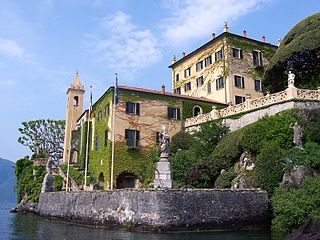
The Villa del Balbianello is a villa in the comune of Lenno, a province in the north of the Lombardy region of Italy, overlooking Lake Como. It is located on the tip of the small wooded peninsula of Dosso d'Avedo on the western shore of the south-west branch of Lake Como, 1500 meters east from the Isola Comacina. The villa is famous for its elaborate terraced gardens.
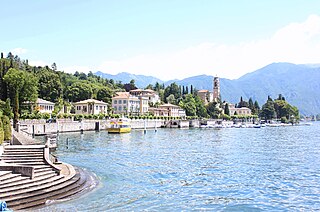
Tremezzo is a comune of some 1,300 people in the Province of Como, in the Italian region Lombardy. It is a member of the I Borghi più belli d'Italia association.
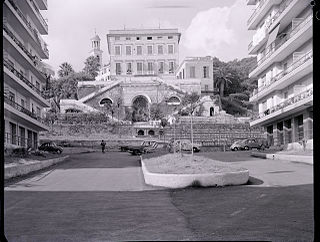
The Villa Durazzo-Pallavicini is a villa with notable 19th-century park in the English romantic style and a small botanical garden. The villa now houses the Museo di Archeologia Ligure, and is located at Via Pallavicini 13, immediately next to the railway station in Pegli, a suburb of Genoa, Italy. The park and botanical garden are open daily except mondays.

Villa Torlonia is a villa and surrounding gardens in Rome, Italy, formerly belonging to the Torlonia family. It is entered from the via Nomentana.

Villa Carlotta is a villa and botanical garden in Tremezzo on Lake Como in Northern Italy. Today the villa is a museum, whose collection includes works by sculptors such as Antonio Canova, Bertel Thorvaldsen, and Giovanni Migliara; painters such as Francesco Hayez; and furniture pieces of previous owners. The villa, whose architect is unknown, was completed in 1745.

The Villa di Castello, near the hills bordering Florence, Tuscany, central Italy, was the country residence of Cosimo I de' Medici, Grand Duke of Tuscany (1519-1574). The gardens, filled with fountains, statuary, and a grotto, became famous throughout Europe. The villa also housed some of the great art treasures of Florence, including Sandro Botticelli's Renaissance masterpieces The Birth of Venus and Primavera. The gardens of the Villa had a profound influence upon the design of the Italian Renaissance garden and the later French formal garden.
The British Committee on the Theory of International Politics was a group of scholars created in 1959 under the chairmanship of the Cambridge historian Herbert Butterfield, with financial aid from the Rockefeller Foundation, that met periodically in Cambridge, Oxford, London and Brighton to discuss the principal problems and a range of aspects of the theory and history of international relations. The Committee developed a study of international society and the nature of world politics, which have had an important impact that continues in the present day.
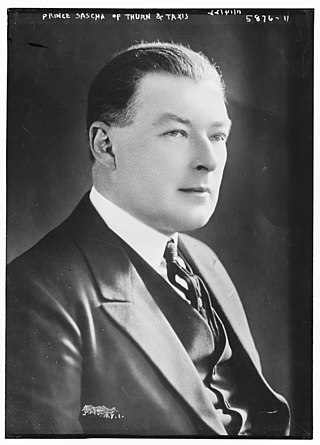
Prince Alessandro della Torre e Tasso, 1st Duke of Castel Duino, full German name: Alexander Karl Egon Theobald Lamoral Johann Baptist Maria, Prinz von Thurn und Taxis was a member of the Bohemian branch of the princely House of Thurn and Taxis. Alessandro was created Prince della Torre e Tasso and first Duke of Castel Duino by Victor Emmanuel III of Italy after relocating to the Kingdom of Italy in 1923.

The Baroque garden was a style of garden based upon symmetry and the principle of imposing order on nature. The style originated in the late-16th century in Italy, in the gardens of the Vatican and the Villa Borghese gardens in Rome and in the gardens of the Villa d'Este in Tivoli, and then spread to France, where it became known as the jardin à la française or French formal garden. The grandest example is found in the Gardens of Versailles designed during the 17th century by the landscape architect André Le Nôtre for Louis XIV. In the 18th century, in imitation of Versailles, very ornate Baroque gardens were built in other parts of Europe, including Germany, Austria, Spain, and in Saint-Petersburg, Russia. In the mid-18th century the style was replaced by the less geometric and more natural English landscape garden.

The Villa Sola-Busca, also called Villa La Quieta, is a Neoclassical style rural palace outside of the town of Tremezzo, on the shores of Lake Como in the Region of Lombardy, Italy.
Michael James Dear is an urban geographer and educator. He has written several books, including Why Walls Won't Work: Repairing the US-Mexico Divide, which was published by Oxford University Press in 2013. He teaches City and Regional Planning at the College of Environmental Design of the University of California, Berkeley.
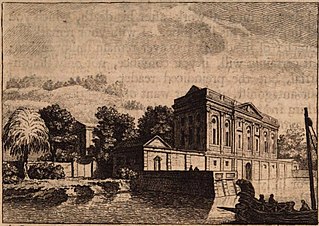
Pliny's Comedy and Tragedy villas were two of the several villas owned by Pliny the Younger during the 1st century in the area surrounding Lake Como in northern Italy. In one of Pliny's letters to his boyhood friend Voconius Romanus, he named them as his favourites. In his letter, Pliny wrote that the Tragedy villa was atop a ridge above the lake, but the Comedy villa was right on the water's edge and that "each of them has particular beauties; a diversity which renders them to their master as still more agreeable." According to the letter, Pliny had derived the villas' names from their geographical positions and the conventions of Roman theatre. He saw the Tragedy villa as rising from its setting like an actor wearing the tragedian's high platform boots, while the Comedy villa down by the lake wore the lowly comedian's slippers. Both villas have long since vanished, and their exact locations remain a subject of speculation.
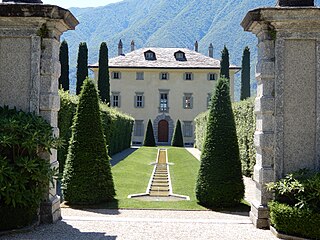
The Villa del Balbiano is a villa in Ossuccio, in Lombardy, Italy.
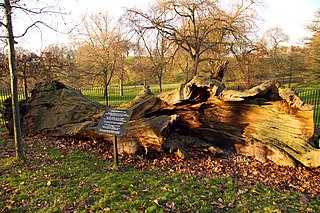
Queen Elizabeth's Oak was a veteran oak tree in Greenwich Park, London. Seeded in the 12th century, the tree formed part of the grounds of the Palace of Placentia, home to the Tudor royal family. Henry VIII is said to have danced around the tree with Anne Boleyn. Their daughter Elizabeth I, after whom the tree is named, is said to have picnicked beneath its canopy, or else within its hollow trunk. When the palace grounds became Greenwich Park, the hollow tree was used as a prison for criminals caught on the grounds. The tree died in the 19th century but was left standing, partly supported by ivy. It fell in a storm in June 1991 and has been left lying where it fell, protected by a fence and marked with a plaque.



















